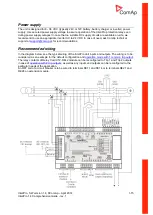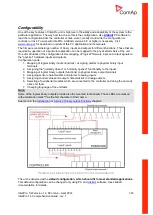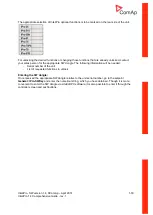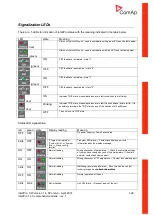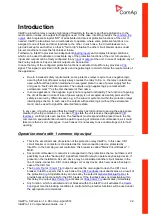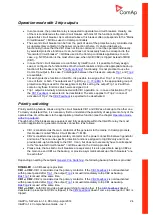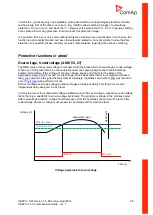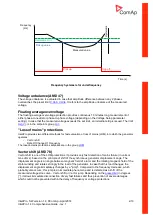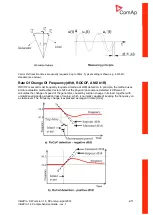
InteliPro, SW version 1.4,
©
ComAp
–
April 2014
InteliPro 1.4 Comprehensive Guide - rev. 1
1-16
Configurability
One of the key features of InteliPro unit is high level of flexibility and adaptability of the system to the
particular application. The way how to achieve this is the configuration. Use
read the configuration from the controller or disk, view it, modify it and write the configuration to
controller or disk. To work with InteliPro, LiteEdit version 4.6.8 or higher is necessary. Visit
for download or update of this PC application and its manuals.
The firmware contains large number of binary inputs and outputs for different functions. Those that are
required by operation of a particular application can be mapped to the physical terminals of the unit.
One of main tasks of the configuration is this mapping of "logical" firmware input and output signals to
the "physical" hardware inputs and outputs.
Configuration parts:
1. Mapping of logical binary inputs (functions) assigning alarms to physical binary input
terminals
2. Assigning the "normally closed" or "normally opened" functionality to the inputs
3. Mapping of logical binary outputs (functions) to physical binary output terminals
4. Assigning sensor characteristics and alarms to analog inputs
5. Assigning control values and output characteristics to analog outputs
6. Selecting of peripherial modules which are connected to the controller and doing the same as
above for them
7. Changing language of the unit texts
N
OTE
:
Some of the logical binary outputs provide also the reversed functionality. Those LBOs are marked
with exclamation mark "!" as the first character of their name.
See more in the
Library of binary output functions
P
RINCIPLE OF BINARY INPUTS AND OUTPUTS CONFIGURATION
The unit is delivered with a
default configuration, which should fit to most standard applications
.
This default configuration can be changed only using PC and
documentation for details.














